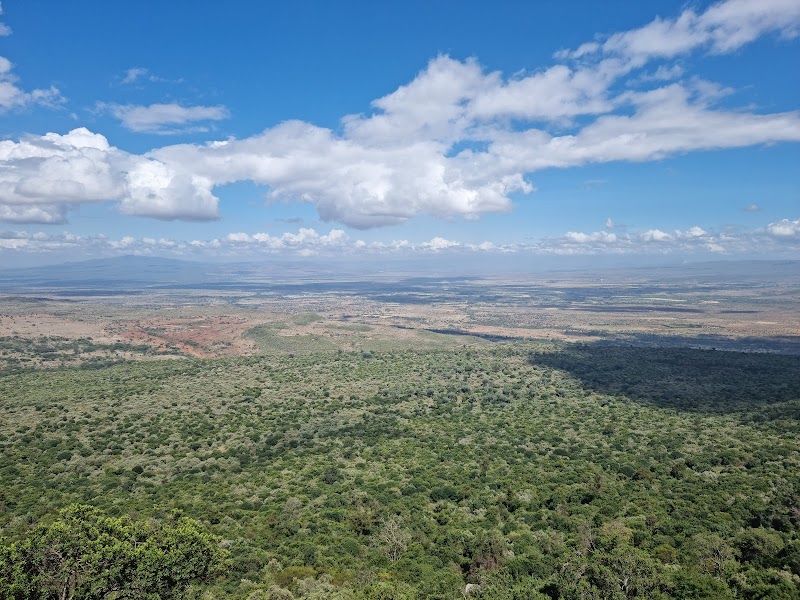
Nairobi International Trade Fair: A Gateway to Kenya’s Vibrant Commerce and Culture
The Nairobi International Trade Fair offers a dynamic glimpse into Kenya’s business and cultural landscapes each October. From livestock exhibits to artisan crafts, it's a practical and immersive experience that connects visitors to the heart of Kenyan innovation and tradition.
Wear Comfortable Footwear
The fairgrounds cover extensive areas including open fields and shaded patches, requiring supportive shoes suitable for walking long distances over varying terrain.
Stay Hydrated
Kenya’s highland sun can be intense during the fair’s daytime hours; carry a refillable water bottle and drink regularly to maintain energy.
Visit During Morning Hours
Engage vendors when they’re less busy and more willing to share insights and stories, making mornings ideal for richer interactions.
Carry Small Cash Notes
Though some vendors accept mobile payments, many prefer cash, especially for smaller purchases or bargaining on crafts and produce.
Nairobi International Trade Fair: A Gateway to Kenya’s Vibrant Commerce and Culture
Every October, Nairobi pulses with a unique energy as the Kenya Agricultural and Livestock Exhibition Centre opens its gates for the Nairobi International Trade Fair. This event transforms the sprawling grounds into a buzzing nexus of commerce, creativity, and culture, drawing visitors from across Kenya and beyond. The fair is more than a marketplace; it’s a hands-on encounter with Kenya’s industrious spirit and diverse heritage.
Covering roughly 50 acres, the Trade Fair grounds spread into distinct zones dedicated to agriculture, livestock, industrial goods, and crafts. The air vibrates with calls from vendors, the rhythmic beats of local music, and the constant shuffle of visitors weaving between stalls. Retailers and manufacturers showcase innovations and everyday essentials—from organic produce and indigenous seeds to the latest in green tech and traditional fabrics.
Navigating the fair is an adventure in itself. Expect to cover several kilometers if you move through each section thoroughly—shoes with solid support are a must. The terrain alternates between dusty open fields and shaded areas under acacia and jacaranda trees, offering occasional refuge from Kenya’s highland sun that often dares visitors to stay refreshed and hydrated.
For those keen on practical takeaways, the fair’s livestock section provides an unmatched chance to observe breeds adapted to the local climate, encouraging sustainable farming practices. The agricultural displays educate on crop rotation, pest management, and soil conservation, giving farmers and enthusiasts concrete skills to bring home.
Cultural exhibits invite visitors into Kenya’s rich ethnic mosaic, with handcrafted jewelry, bespoke wood carvings, and intricate textiles bearing stories of local communities. Workshops and live demonstrations on beekeeping, basket weaving, and traditional medicine offer active engagement rather than passive viewing.
Plan your visit early in the day to avoid the midday heat and crowds. Vendors tend to be most approachable during morning hours, sharing stories alongside their products. Bringing a reusable water bottle and sun protection will keep you comfortable.
Whether you’re a casual visitor eager for a taste of Kenyan culture or an entrepreneur scouting business opportunities, Nairobi International Trade Fair challenges you to engage with a landscape fiercely thriving with tradition and innovation. Here, commerce meets community under the watchful eye of urban Nairobi, inviting you to participate in an experience that’s as informative as it is invigorating.
Nearby Trips
All Adventures
Boat Charters
Water Activities
Adventures near Nairobi, Kenya
Discover the unique and memorable adventures that make Nairobi, Kenya special.
Frequently Asked Questions
When does the Nairobi International Trade Fair take place?
The fair is traditionally held in October every year, spanning approximately 10 days, aligning with Kenya’s agricultural calendar and favorable weather.
What types of goods and services are showcased?
Exhibits range from agricultural products, livestock breeds, industrial machinery, crafts, food products, to emerging technologies tailored for East African markets.
Are there activities for children and families?
Yes, family-friendly zones include animal interaction areas and cultural displays designed to educate and entertain younger visitors.
Is there public transportation to the fair?
The fairground is accessible via Nairobi’s matatus (minibuses), taxis, and organized shuttles, but planning extra time for traffic is advised during peak days.
Are photography and filming allowed during the event?
Photography is welcomed to capture the vibrant scenes, but always ask permission before taking pictures of vendors or livestock to respect privacy and ethics.
What local cuisine should visitors try at the fair?
Don’t miss sampling nyama choma (grilled meat), ugali, and a variety of street foods that reflect Kenya’s diverse culinary traditions.
Recommended Gear
Comfortable Walking Shoes
Supports extensive walking over grassy and dusty fairground terrain.
Reusable Water Bottle
Keeps you hydrated under Nairobi’s sun during daytime explorations.
Hat or Cap
Provides shade and protects against sun exposure.
Light Rain Jacket
Useful in case of unexpected rain showers during earlier parts of the year.
Local Insights
Hidden Gems
- "The livestock auction ring where rare and indigenous breeds are available for viewing."
- "Quiet corners beneath mature jacaranda trees occasionally hosting impromptu music gatherings."
Wildlife
- "Watch for the agile weaver birds weaving nests in the acacia trees around the fairground."
- "Occasional visits by Nairobi’s urban monkeys that deftly navigate the trees bordering the event."
History
"The Trade Fair traces its origins to colonial-era agricultural exhibitions, evolving into Kenya’s premier trade and cultural event reflecting decades of economic growth and innovation."
